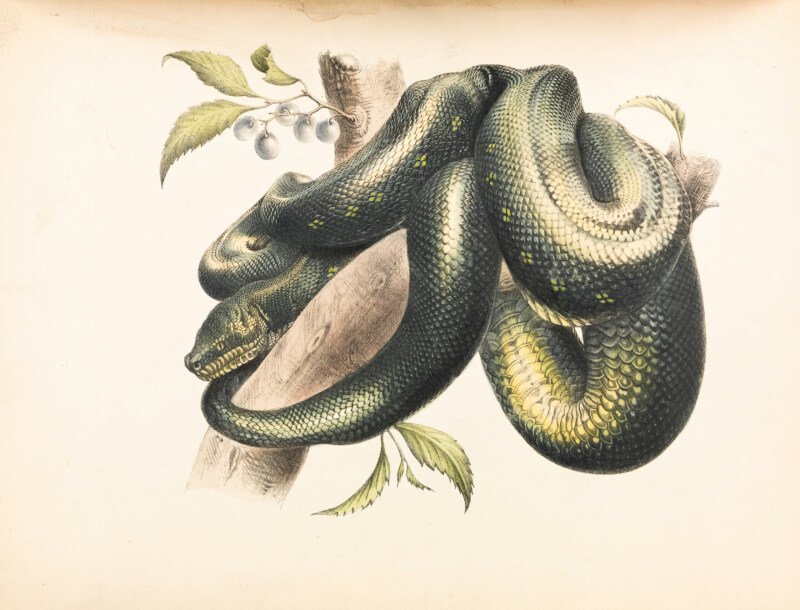In a snake habitat, there are certain dangers that you should be aware of to ensure your safety. From venomous snakes to precarious terrain, it is important to stay cautious and vigilant. This article discusses the common hazards one may encounter in a snake habitat, providing valuable insights to help you navigate these environments with confidence. Whether you are a curious explorer or a seasoned adventurer, this guide will offer you the necessary knowledge to coexist peacefully with these fascinating creatures and their habitats. So, let’s explore the potential dangers and arm ourselves with the information to stay safe in a snake habitat.
Common Hazards To Watch Out For In A Snake Habitat

Introduction
When exploring a snake habitat, it’s important to be aware of the various hazards that can pose a threat to both the snakes and yourself. From natural hazards to human-related dangers, understanding these risks can help you take appropriate precautions and ensure the safety of the habitat and its inhabitants.

Natural Hazards
1. Extreme Temperatures
One common natural hazard in snake habitats is extreme temperatures. Snakes are ectothermic creatures, meaning they rely on their environment to regulate their body temperature. If the temperature becomes too hot or too cold, it can negatively impact their health and survival. It’s crucial to monitor weather conditions and avoid visiting snake habitats during extreme temperature fluctuations.
2. Flooding
Flooding can be disastrous for both snakes and their habitat. Heavy rainfall or rising water levels can result in the loss of nesting sites and the destruction of vegetation, which many snake species rely on for shelter and protection. Additionally, flooding can displace snakes from their natural habitats, increasing the risk of encounters with humans.
3. Drought
On the flip side, drought can also pose a hazard in snake habitats. During periods of prolonged drought, water sources may dry up, leaving snakes without access to essential hydration. This can lead to dehydration and even death. When exploring snake habitats during periods of drought, be cautious and avoid disturbing any limited water sources.
4. Thunderstorms
Thunderstorms bring their own set of dangers to snake habitats. Lightning strikes can start wildfires, and the loud noises and vibrations from thunder can disturb snakes, causing them to seek shelter in unexpected places or exhibit defensive behaviors. It’s advisable to avoid snake habitats during thunderstorms to reduce potential risks to both snakes and humans.
5. Wildfires
Wildfires are a natural hazard that can have devastating effects on snake habitats. Not only do these fires destroy vegetation and disrupt the ecosystem, but they can also directly harm or kill snakes. During wildfire season, it’s best to avoid snake habitats altogether and allow the area to recover naturally.
6. Predator Prey Relationship
The predator-prey relationship within snake habitats is an essential aspect to consider. While snakes themselves may not be the predator, they serve as an essential part of the food chain, preying on smaller creatures and helping to maintain a balanced ecosystem. Disrupting this delicate balance by removing or adding species can have significant consequences on the overall health of the habitat.

Human Hazards
1. Habitat Destruction
Human activities, such as deforestation and urbanization, can lead to the destruction of snake habitats. Clearing land for agriculture, logging, or infrastructure development can result in the loss of critical vegetation and nesting sites for snakes. To protect snake habitats, it’s crucial to promote sustainable land use practices and prioritize conservation efforts.
2. Pollution
Pollution, including air, water, and soil pollution, can have severe consequences for snakes and their habitat. Chemical pollutants can contaminate water sources, making them toxic for snakes to drink from. Additionally, air pollution can impact the respiratory systems of snakes, leading to health issues. Reducing pollution through proper waste management and environmentally-friendly practices is vital for preserving snake habitats.
3. Illegal Wildlife Trade
Illegal wildlife trade is a significant threat to snake habitats and the snake populations themselves. Snakes are often captured and traded for their skin, meat, or as exotic pets. This illegal activity not only disrupts the natural balance of the habitat but can also contribute to the spread of diseases among snake populations. Raising awareness about the consequences of the illegal wildlife trade and supporting initiatives to combat it are essential for protecting snake habitats.
4. Hunting and Trapping
Hunting snakes for traditional medicine, food, or sport is another human hazard that can deplete snake populations and disrupt their habitats. Snakes play a vital role in controlling rodent populations and maintaining a healthy ecosystem. Overhunting or trapping snakes can have cascading effects on the entire ecosystem, leading to imbalances and negative consequences for other species as well.
5. Vehicle Collisions
Snake habitats that intersect with roads pose a risk of vehicle collisions. Snakes may attempt to cross roads, especially during mating or migration seasons, and are often difficult to see due to their camouflaged appearance. To reduce the likelihood of vehicle-snake collisions, it’s important to stay alert while driving through snake habitats and adhere to speed limits to allow for braking in case of sudden snake sightings.
6. Snakebite
While snakes themselves are not hazards, their bites can be dangerous. It’s essential to understand snake behavior and habitats to minimize the risk of snakebite. Avoiding contact with snakes, wearing appropriate protective gear, and being aware of your surroundings can help prevent incidents. In the event of a snakebite, seek medical attention immediately and try to provide accurate information about the snake to aid in the proper administration of antivenom.

Conclusion
Being aware of the common hazards in snake habitats is crucial for both the well-being of the snakes and your own safety. By understanding the natural dangers and human-related threats, we can take necessary precautions to preserve snake habitats, foster conservation efforts, and coexist harmoniously with these fascinating creatures. Remember, a friendly and respectful approach toward snake habitats is the key to a successful and enriching experience.



